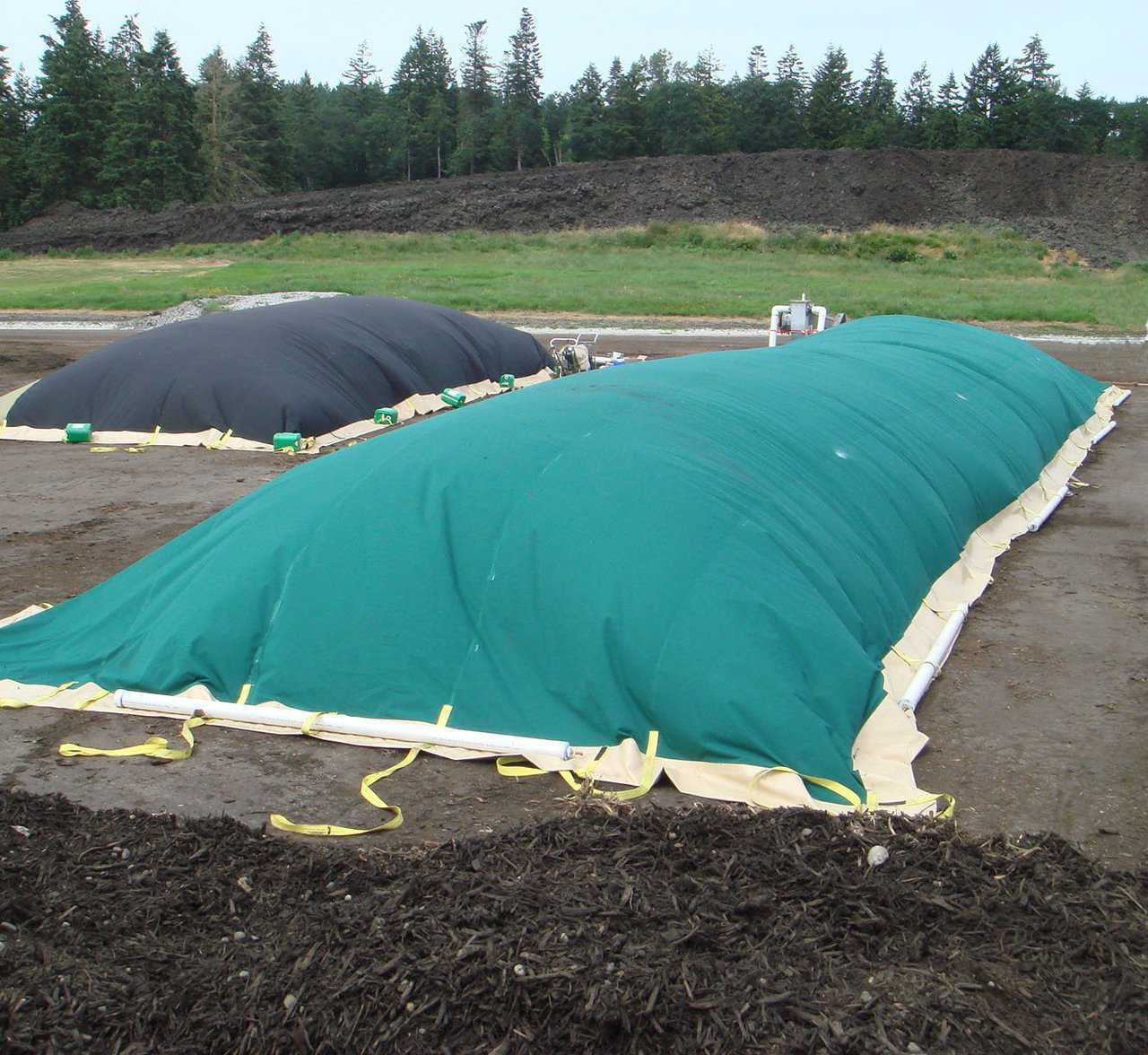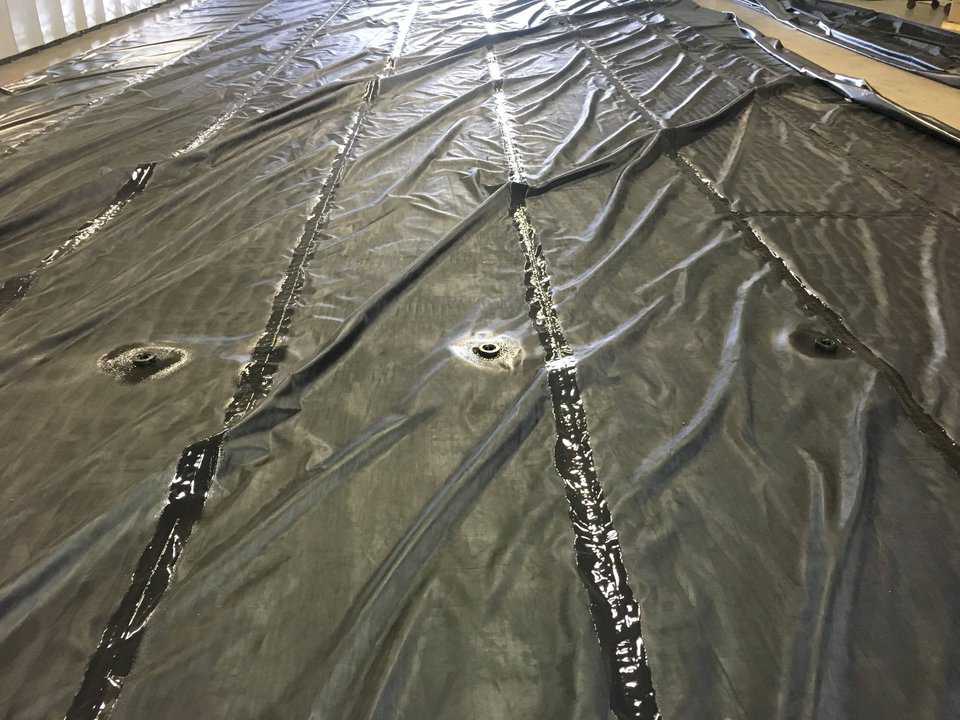Monolithic headquarters in Italy, Texas is known for making Airforms and building Monolithic Domes. But for the last 10 years the company has also manufactured compost covers.
It all started when John Bouey, president of Managed Organic Recycling (MOR), Inc., met Monolithic founder David B. South. Bouey was in the process of buying micropore compost covers and had found the only companies manufacturing them were unaffordable. South mentioned to Bouey that Monolithic could make them if given the material.
The first covers were delivered to Salt Lake City, Utah in 2007, and it was the beginning of a wonderful partnership. Bouey and MOR, Inc. do all the marketing and engineering while Monolithic does the manufacturing. “Monolithic has been with us for 10 years, and I wouldn’t go to anyone else,” Bouey said.
These covers have a warranty of five years and, according to Bouey, last twice as long as the competitors’ covers. Depending on the customer’s needs, they can be made to any size. These covers allow and promote the biodegrading of organic matter into a usable recyclable soil aid in a very short time.
The covers are made out of a microporous membrane laminate cover. Bouey described the material as allowing moisture vapor to escape without letting rain in. These covers are put over composting material, allowing it time to decompose into a safe material. Using a biological process, the company uses a system “so we get the right mixture,” Bouey said. Typically, the process takes less than 21 days in the active phase to kill pathogens, and then four to six weeks to produce a stable finished product. MOR, Inc.’s compost covers have been tested using Environmental Protection Agency protocols and meet South Coast Air Quality Management District Rule 1133.
Monolithic president Michael South praised the design of the covers and stated they are “molecularly engineered to be successful.” By allowing certain vapors to pass through the pores, volatile organic compounds and odors, often referred to as fugitive emissions, are retained under the microporous membrane.
The latest addition from the Monolithic side is a sealant. This is sprayed over the seams of the covers to further insulate and keep in the desired emissions. It is what South dubbed ‘Mono seal’ and it being added to the latest covers. Bouey praised the seal, stating it worked well to stop leaks of fugitive emissions and makes the seams stronger.
Although Monolithic has been manufacturing these covers for 10 years, South stated the production has increased lately. “The last few years it has really exploded.” They manufacture three different types of covers. A big increase in demand has come from China recently, and could promise to be a new market for these covers.
For more information about compost covers, visit MOR, Inc.’s website.


